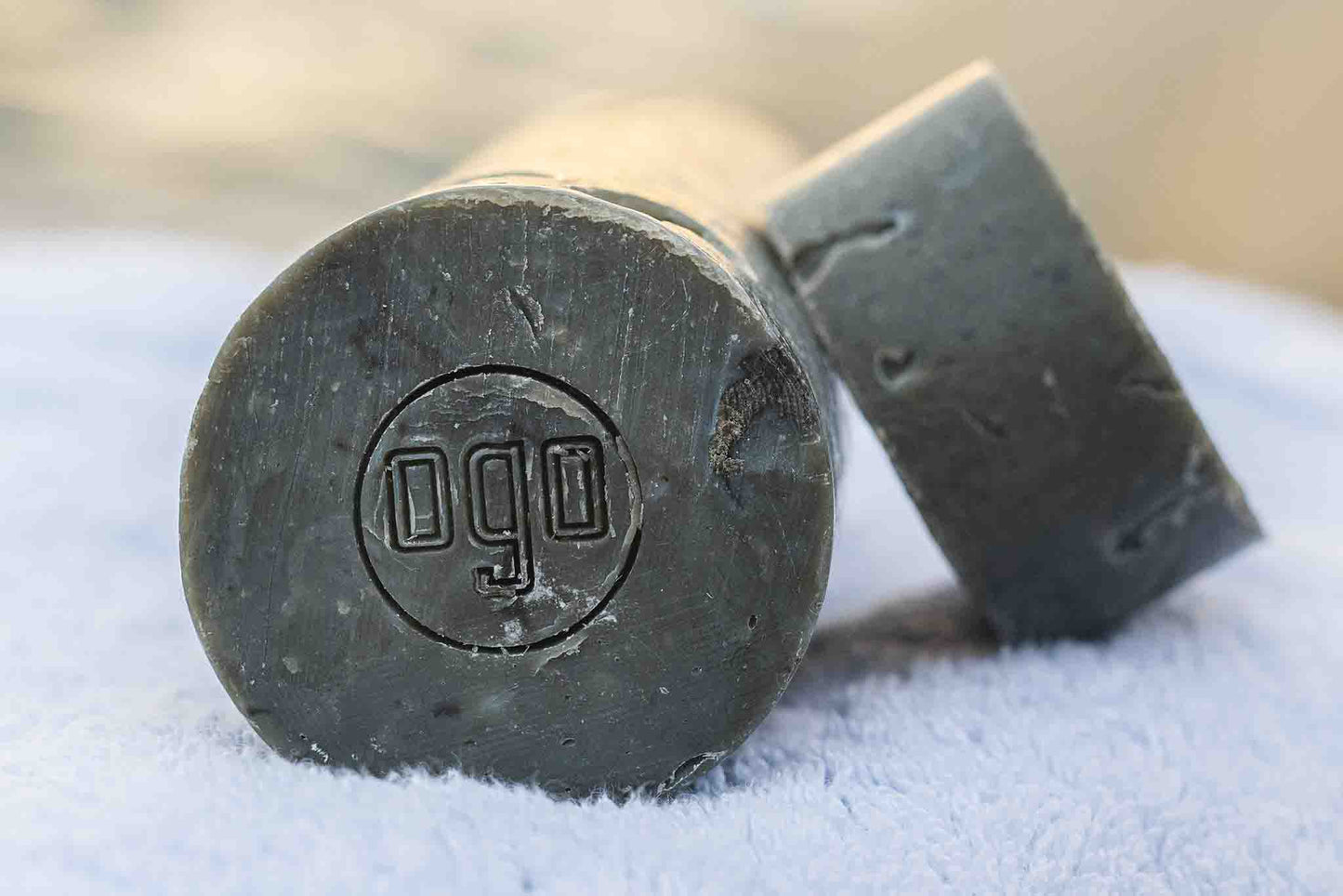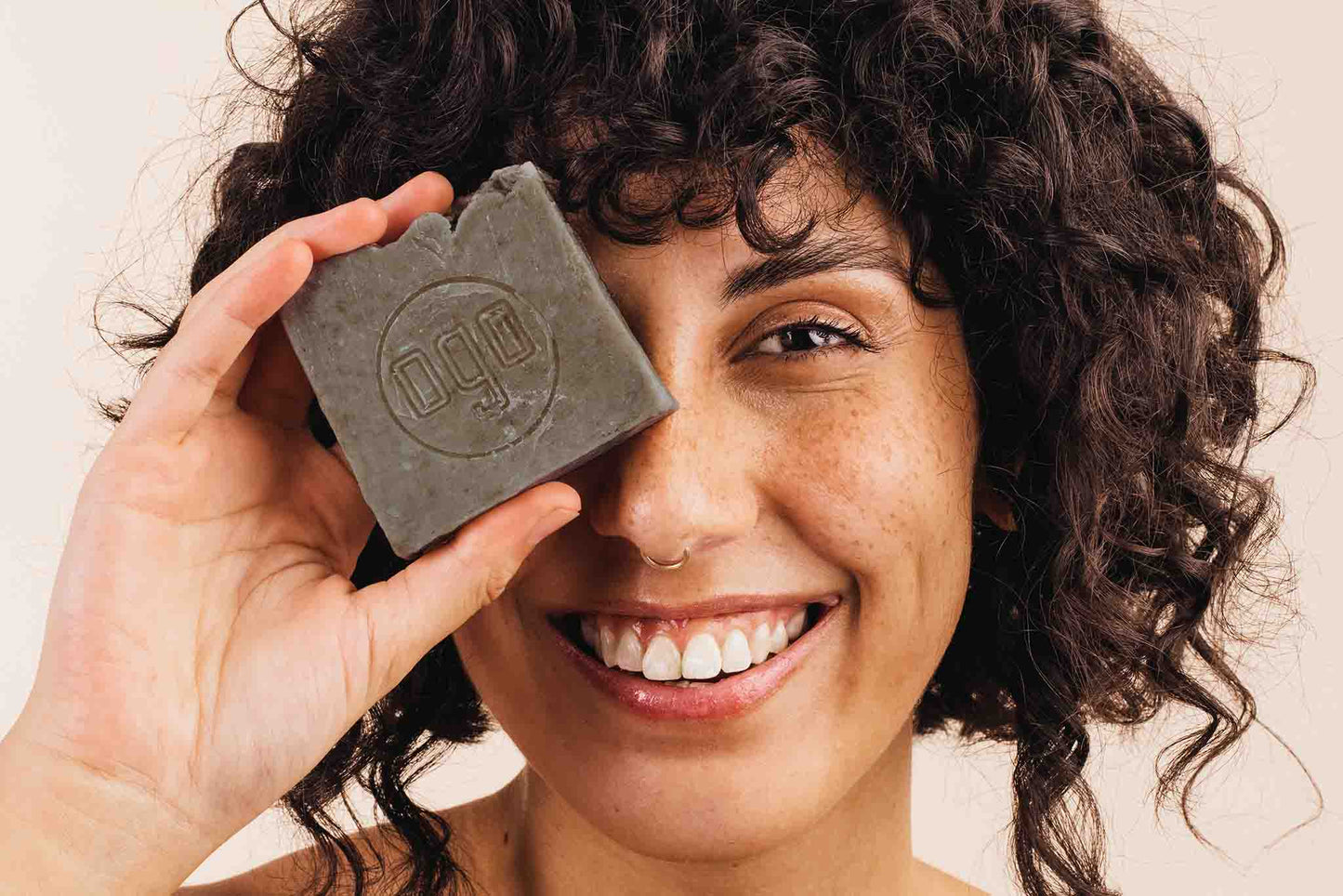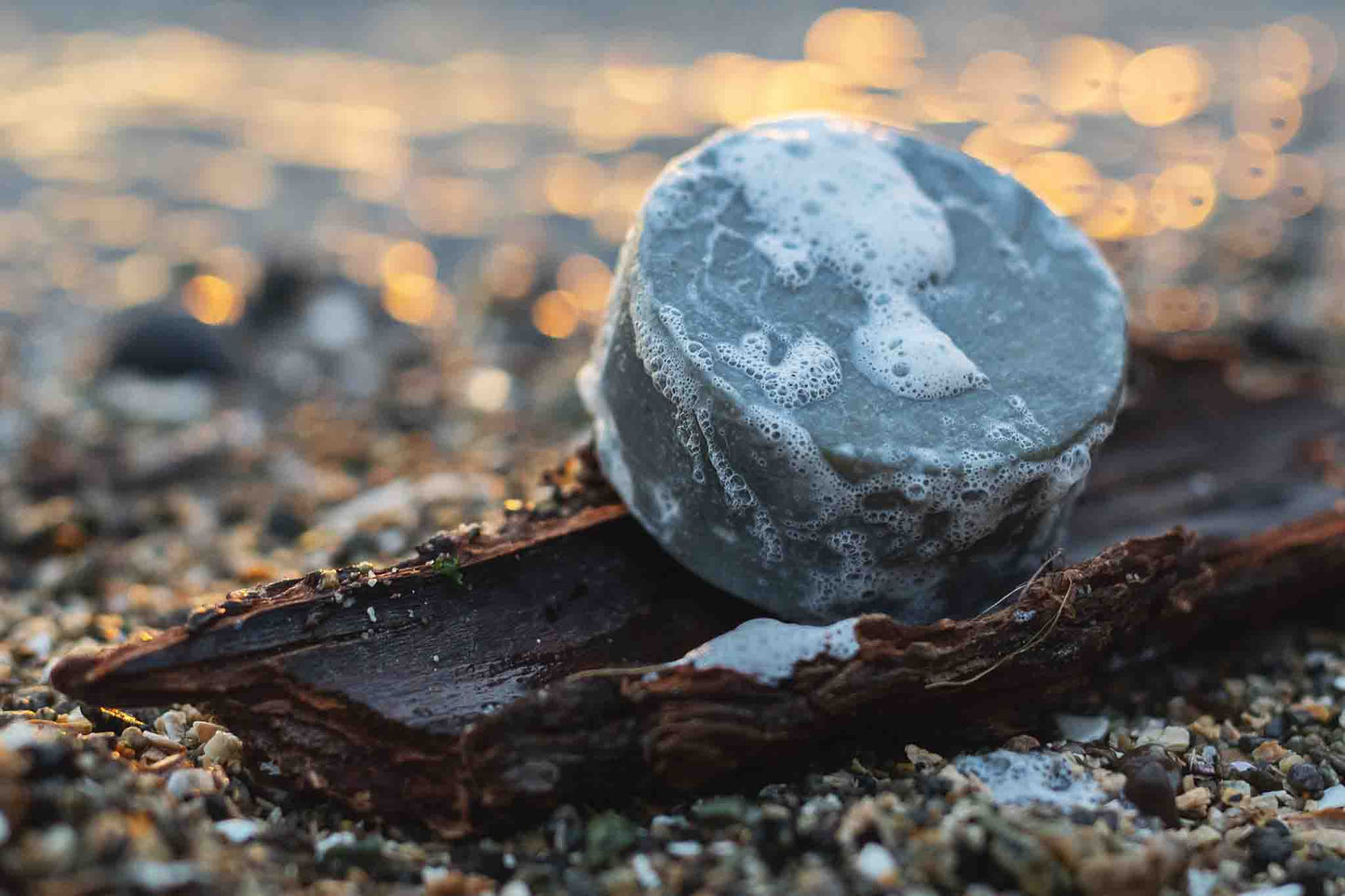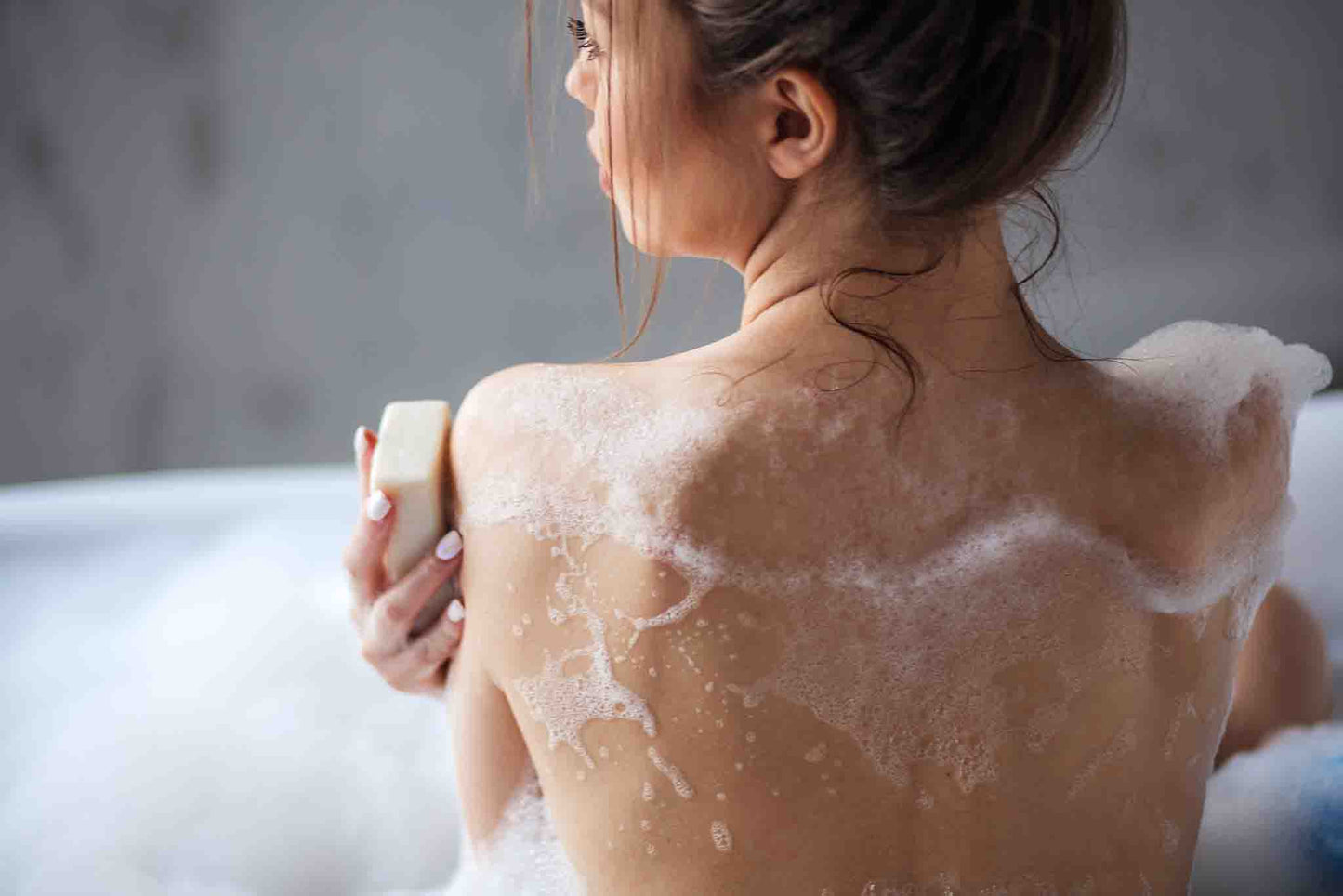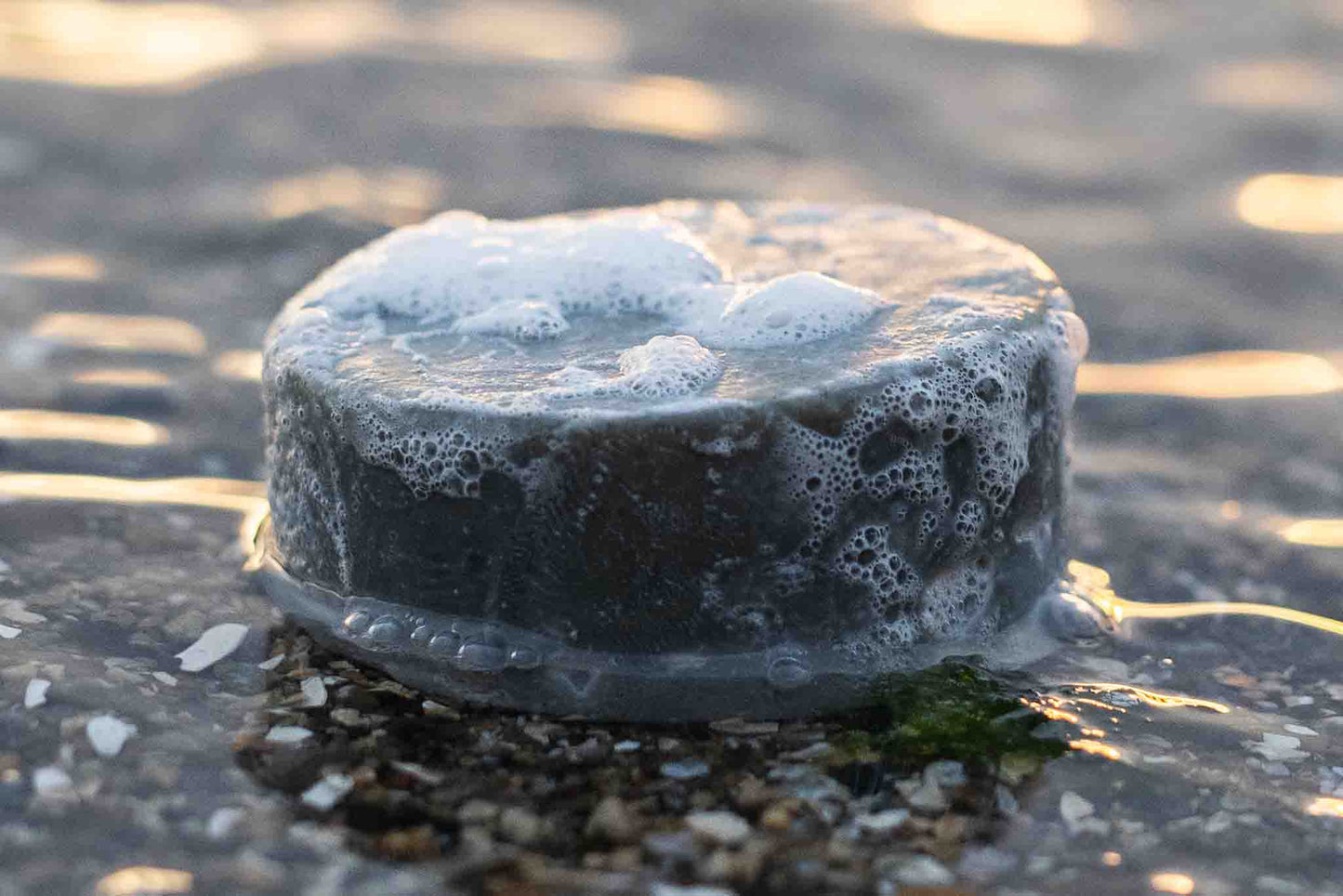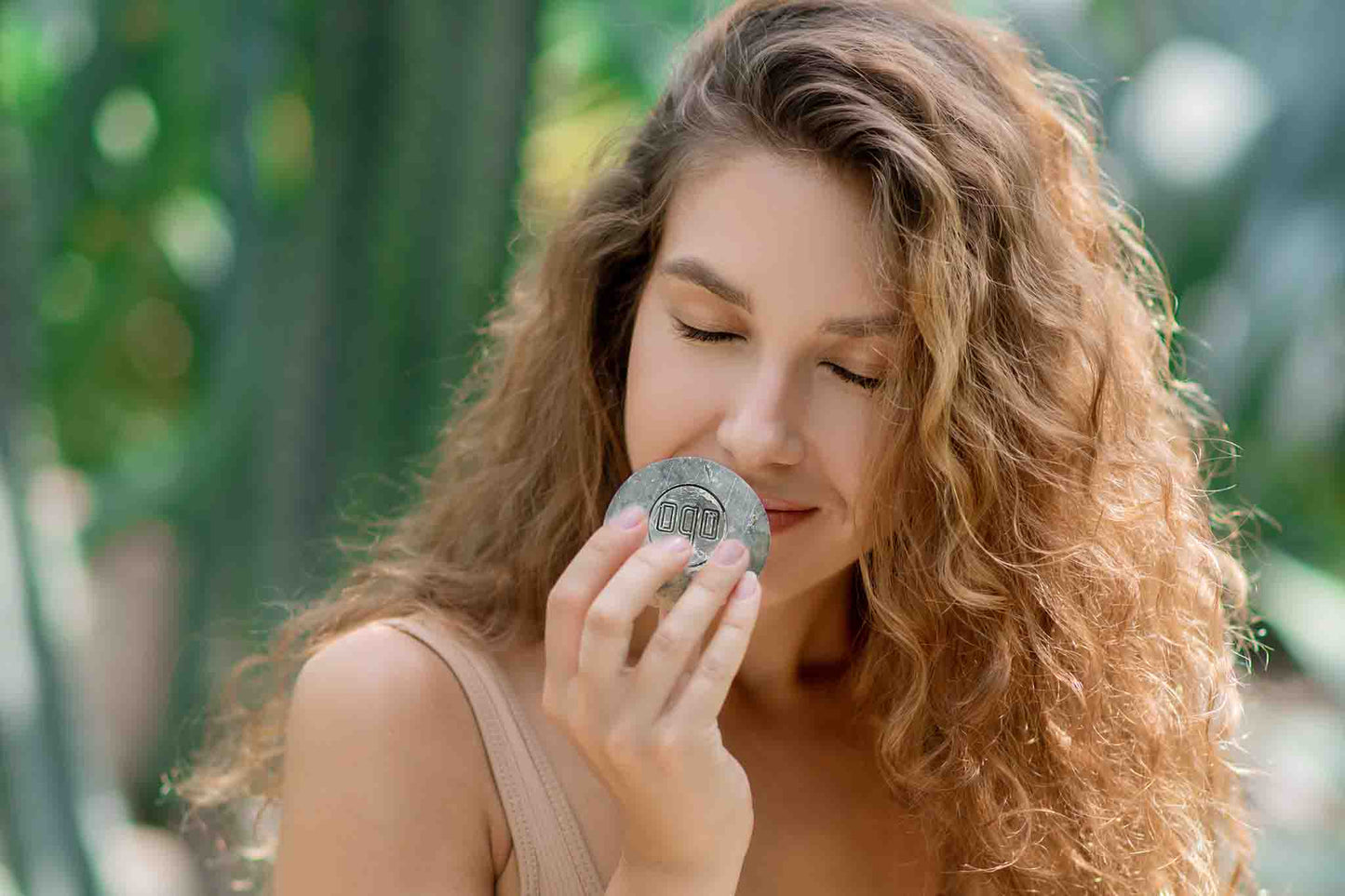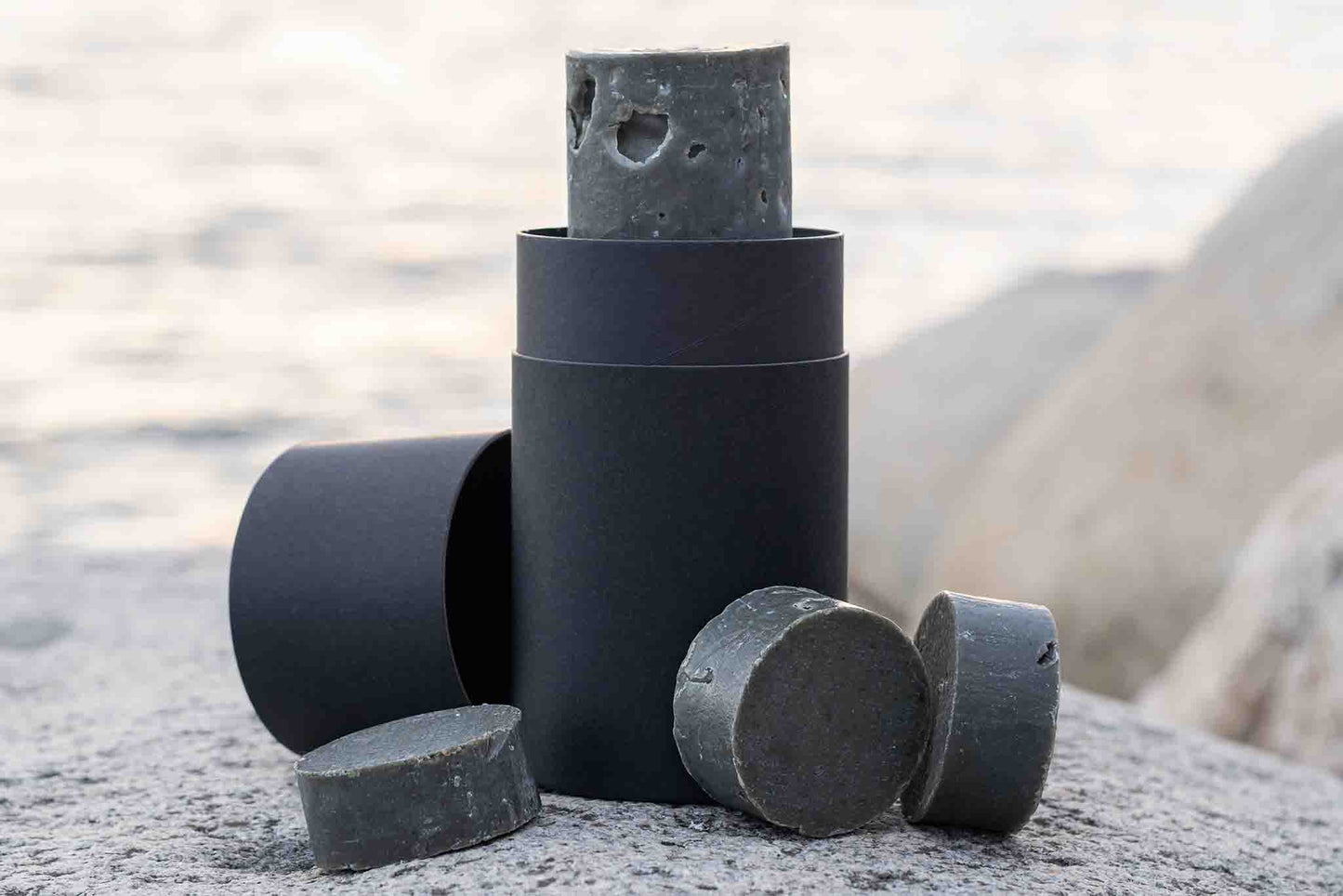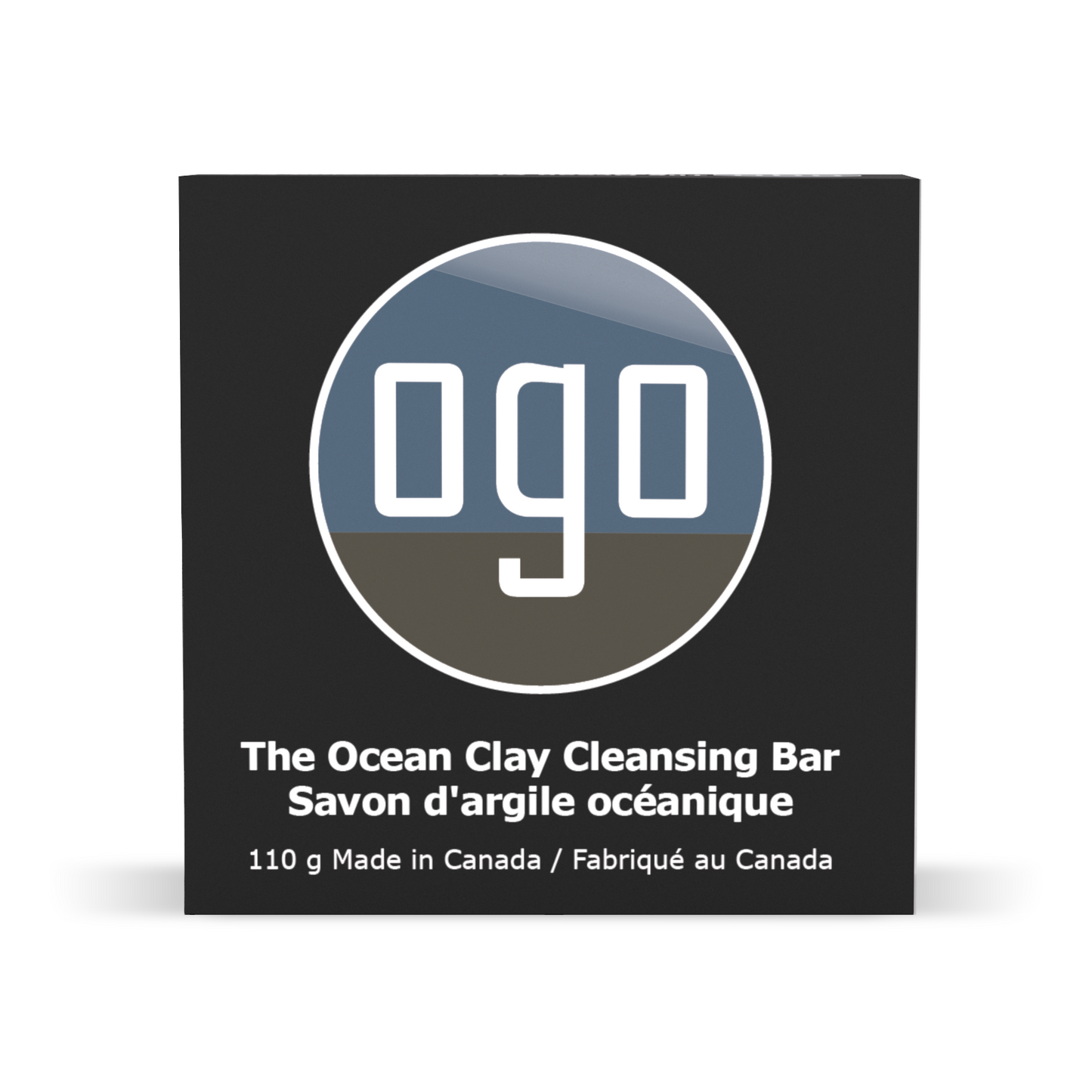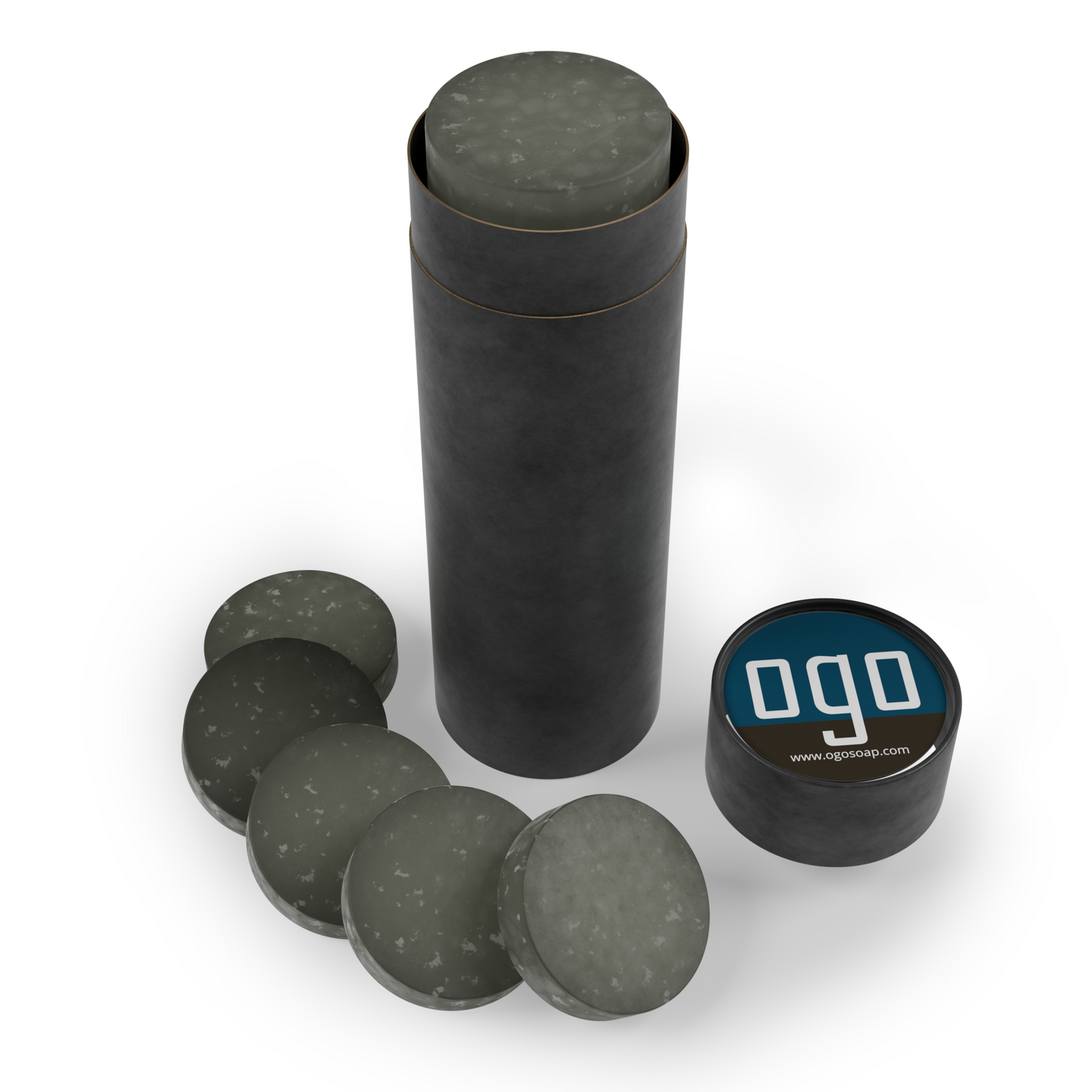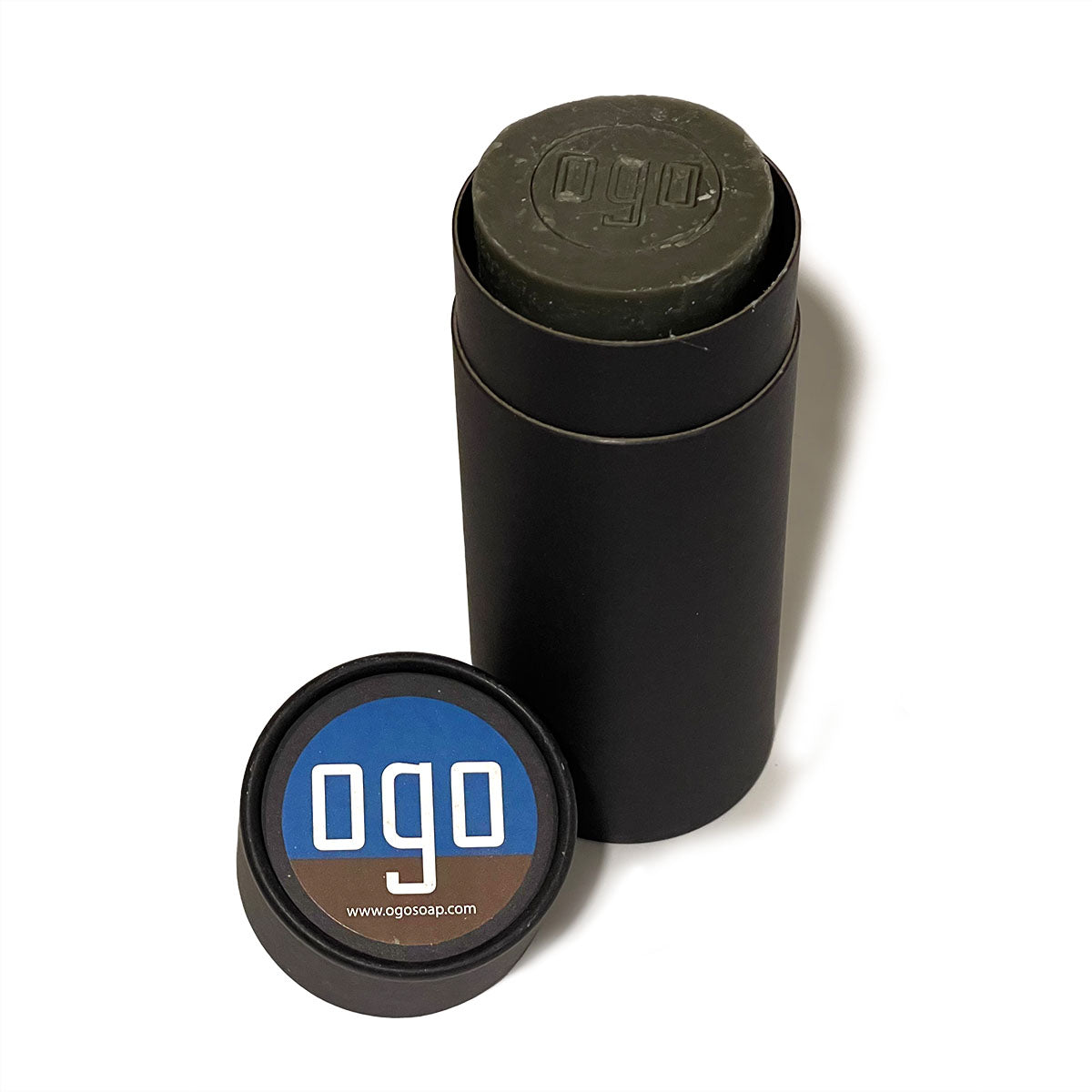
OGO Soap’s customers love the mineral-rich clay that makes our products so effective in detoxifying the skin. It comes from an ancient glacier in a unique natural area that gives the clay a variety of properties that nurture skin and help improve its health.
To learn more about the oceanic clay and why it’s so effective, we talked to our supplier, Glacial Bay Organic Clay Inc. Robert Fuller, CPA, CA, President of the company talks a little about the company’s history, the manufacturing process, and the clay itself. He discusses why it’s unique and its benefits in clay skin care products.
Observing Healing Properties in the Wild
Fuller got the idea to start Glacial Bay Organic Clay when working as a volunteer director. He was working with coastal First Nations on Vancouver Island and loved listening to their storytelling. Fuller said, “One of the things I’ve always enjoyed when working with the first nations is hearing the elder stories that get passed down. One night when I was with the Chief and some of the elders from the council, they were storytelling about how their people for millennia had caught all of their salmon in this area.
“The grizzly bears were also fishing in this area, and they used to fight each other. The First Nations used to watch these bears fight and they would roll around in this clay that was at the edge of the water. That’s how First Nations medicine works. They would look at the animals to see if they used different plants or substances or vegetation. And they discovered by applying this clay to their cuts, sunburns, and burns that it had a real healing quality.”
The storytelling gave Fuller an idea to go up to the Coastal Mountain Range and check it out for himself. “It’s so remote – a 2.5 3-hour boat ride. There’s no vehicle access. You can only get there with a float plane or water taxi.”
Location, Location, Location
This location makes Glacial Bay’s clay what it is. Not only is the area remote with no development, it’s also a region where two rivers run into an estuary that connects to the sea. These rivers run down a glacier on a mountain range that was shaped by volcanic activity. Together, these features have created a natural clay that is rich in phytonutrients beneficial for skincare.
The clay is made up of various minerals including illites which are the most common ingredients in clay. These ancient volcanic areas have eroded from years of weathering, and they are collected by the rivers that run down the glacier. These rocks and minerals are carried down the glacier into the estuary where river meets ocean. There, they absorb phytoplankton and other marine properties that help give the clay its unique composition.
Once Fuller had the idea to harvest the clay, he started taking steps to figure out if this idea was viable. “I was able to go up with some of the First Nations to see the area. It took me a couple of years to stake out claims in the places that had the finest clay. I started testing the clay with assaying to find out what kinds of minerals are in there and trace elements and to find the clay that would be suitable for commercial production focusing at first on the cosmetic industry.
Fuller worked closely with members of the First Nations who had introduced him to the area and its healing clay. He said, “We staked all the claims, worked with our First Nations to build a resource. I formed an agreement with them that some of our proceeds would help to pay for their fishing hatcheries and the grizzly bear enhancement projects for their habitats.”
The source of the clay is an inlet system known as the Coastal Mountain Range. Its highest peak is Mt. Waddington, which is a mountain glacier and part of the Homalco icefield, which replenishes the clay during the spring runoff season.

Harvesting With Little Impact
Since the remote area that serves as the main clay supplier is untouched, it made sense to Fuller to keep the harvesting process as ethical as possible. It is hand-harvested at depths of 12-18 inches. Harvesting at low levels means that the clay can be replenished during the winter runoff cycle. It helps to ensure that the clay is a renewable resource. When harvesting, the dig team angles all trenches so small salmon fry and other fish can escape during the following low tide. This area serves as a food source for grizzly bears and other native wildlife, so it’s important to minimize the impact to their natural habitat.
Glacial Bay Organic Clay is committed to preserving sea health. The company only removes a certain amount of clay per harvesting season. Even though the area has enough clay for a large supply of products, Fuller and his team have only sought to harvest an amount that will supply their customers without harming the ecosystem that produces the clay.
He goes into more detail about how his team harvests and processes the clay. “We’ve focused on manufacturing, being able to take a product from the ocean dry it completely and put it into a product that’s presentable and saleable to the public. We start with a silt that flows down from the river that gets deposited into a rich ocean environment.
“Our aim is to do everything in a sustainable and environmentally friendly. When we harvest the clay, it’s all done by hand. We place it in burlap sacks that we reuse. Then there’s a barge that comes around and delivers food to all the smaller outreaching communities in the area. When the barge is empty, it circles back and picks up all our clay, which is then delivered to our greenhouse facilities.”
Harvesting the clay by hand minimizes its impact to the area. There is no need to drag in large equipment that would ruin the clay, and this technique minimizes any damage to the marine life who live in the water.
Once the clay is harvested, it needs to be processed into the raw ingredients that eventually make it into our OGO Soap products. Fuller discusses how they do it. “In our facilities, we have a proprietary system for drying and refining the clay. We work with mother nature to dry it in a glass solarium which is a 50,000 square foot greenhouse. Everything is done by hand.”
In the solarium, the clay dries until it contains less than one percent water. Employees take large dried clumps and refine them until the clay reaches a fine consistency that Fuller compares to talcum powder or icing sugar.
Then, it’s taken to the screening plant where all organic materials are screened out. In this case, “organic materials” refers to small seashells and anything larger than 17 microns, including sand and other large particles.
Once the clay has been screened and these materials have been removed, the company packages it into food-grade plastic containers and boxes it up for manufacturers like OGO Soap.
The company’s harvesting technique and its solarium-drying process have made the process carbon neutral. Transporting the clay to the processing facility with a barge that was already in the area for food deliveries eliminates multiple trips, which enhances sustainability.

How Glacial Marine Clay Benefits the Skin
According to Fuller, organic marine clay has the same pH as bacteria that naturally occur on our skin. Coupled with its ingredients, these properties make it great for skincare. Fuller says, “When the clay is mixed with conditioners and other ingredients, it has the ability to absorb them and transfer them into the skin. Since our clay has the same pH as natural bacteria, it allows the minerals and trace elements to easily transfer into the skin. The clay has a really strong negative charge which helps detoxify the skin. Most bacteria are positively charged, so when our clay is applied, it takes out all of the toxins and nourishes your skin.”
Organic marine clay also binds with oils, dirt, and other skin impurities which wash away when you rinse it off. It leaves your skin refreshed. It also aids in circulation by encouraging blood flow to the skin’s epidermal layer.
Along with soap, it can be used to make a variety of clay skin care products including mineral makeup, lip gloss, toners, moisturizers, cleansers, and much more. Since it binds with larger particles in the skin, it’s good for exfoliating before applying moisturizers.
At OGO Soap, we use the clay to make soap, face masks, and other body products, but some of Fuller’s clients include doctors and naturopaths. “Our clients have used it to help with sunburns, cuts, rosacea, and even shingles.” The company has done its own skin sensitivity testing to prove that it doesn’t cause allergic reactions in most people.
Going to the Source
Although many of Glacial Bay Organic Clay’s customers buy the clay wholesale and use it to make other products including soap and other cosmetics, customers can buy the clay themselves. If they choose that option, Fuller recommends mixing it with water at a 2:1 ratio and then applying it to the skin. He suggests leaving it on for 15-20 minutes, but it’s safe to use for longer time periods. Clients can use it to relieve a variety of skin disorders including acne, dandruff, hives, scarring, inflammation, and sunburns.
Retail customers who want to mix their own pure-clay facemasks can buy small pouches of the clay online. It comes in three different sizes, so customers can test it out with a small pouch and decide if it’s right for them.
One interesting use the company’s clients have discovered is arthritis treatment. “We have people who have arthritis who soak their hands and it helps the pain. It’s very simple to use.” Some of them will put a little into a jacuzzi tub and soak in it to help alleviate their aches and pains.
Glacial Bay Organic Clay has not gone through a series of medical testing to validate its healing properties, but the indigenous people who live in the area and customers attest that the clay helps soothe their skin. Fuller may one day carry out the testing needed to prove the clay’s healing properties, which could open up the product to a broader spectrum of uses for healthcare professionals.

Doing Good for the Environment
Glacial Bay Organic’s glacial marine clay is manufactured following Canada’s good manufacturing practices which set strict guidelines for product quality control and risk management. To meet these standards, a company has to comply with manufacturing and sanitation procedures that keep the final product from being contaminated by chemicals and microbes.
The company is also a COSMOS eco-certified raw ingredient that is not tested on animals (unless you count the bears who routinely roll around in the clay if they’ve been injured in a fight). Fuller said, “We only test it on ourselves by putting it on cuts, scrapes, and blisters.”
To achieve COSMOS certification, a company has to prove that its production processes are respectful of human health. These products have to use natural resources responsibly, and the company has to show a commitment to maintaining biodiversity. COSMOS-certified products can’t contain petrochemicals or GMOs and they have to use recycled packaging.
Doing Good for Others
With his own success, Fuller has given back to the First Nations who started him on his journey into the health and wellness realm. Along with the portion of the proceeds that he shares with the First Nations for fish hatcheries and wildlife preservation, he is involved with philanthropy.
“We help the elders with the transfer of information and storytelling. These stories are passed down from the elders to the younger generation who then become the guides of an ecotourism business that they’ve put together to showcase the grizzly bears, fish hatcheries, and sea life.”
British Columbia alone is home to more than 200 indigenous communities, many of whom are native to Vancouver Island. Visitors to the island can experience cultural tours and learn about the native wildlife in the area. These tours are designed to respect indigenous beliefs and culture, giving visitors insight into the area’s history and customs. It’s also a great way to learn about nature and encourage preservation and land stewardship.

Our Perfect Partner
At OGO Soap, we work with suppliers whose commitment to the environment mirrors our own, so Glacial Bay Organic Clay is a natural fit for us. Our company began when our founder was looking for an organic alternative to chemical-laden soaps. Fuller enjoys working with companies like ours because of these shared values.
“We try to work with manufacturers who are interested in having an organic natural product with no preservatives or chemicals and nothing to worry about. Because our clay comes with a low bacteria count, they can use it in their formulation. Our clay has a very good shelf life because of that. We generally work with larger clients and soap manufacturers who like to use materials that aren’t bad for you.”
While Fuller knows he can’t control what his customers do with the raw material, most of his current customers like the clay for its organic properties. It’s possible that someone could mix it with dyes and other skin irritants. But those who tend to be attracted to this ingredient like it because it is natural and the company is committed to harvesting it responsibly.
Glacial Bay Organic’s unique mineral clay helps make our Ocean Clay Cleansing bar one of our most popular products. We pair the clay with seven oils and butters, including coconut oil, palm oil, castor oil, olive oil, avocado butter, and more that cleanse and nourish the skin. By partnering with suppliers who share our commitment to sustainability and natural ingredients, we bring you quality products with less impact.
In Closing
Thanks to our supplier and their commitment to creating a quality product that is all-natural, we can offer our own range of organic products to our customers. The products we make using this clay are hand-made in small batches and provide an array of benefits to skin all over the body.
We offer clay masks that purify and balance facial skin, which often has different issues than the skin on the body. For that, we offer our Ocean Clay Cleansing Bar. It goes beyond simply cleaning the skin, also nourishing and protecting it. It’s safe for sensitive skin.
Customers appreciate soap that makes it feel clean without stripping the natural oils from their skin. Some choose to skip the face mask and use the soap for their face as well. The marine clay makes it gentle enough for the faces and bodies of anyone who prefers a bar of soap to a complicated skincare routine.
We share Glacial Bay Organic Clay’s commitment to responsibility, using our own sustainable manufacturing processes and eco-friendly packaging. We love working with suppliers whose philosophy echoes our own, and we are proud to deliver our products to you.




